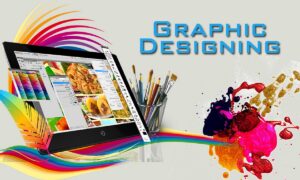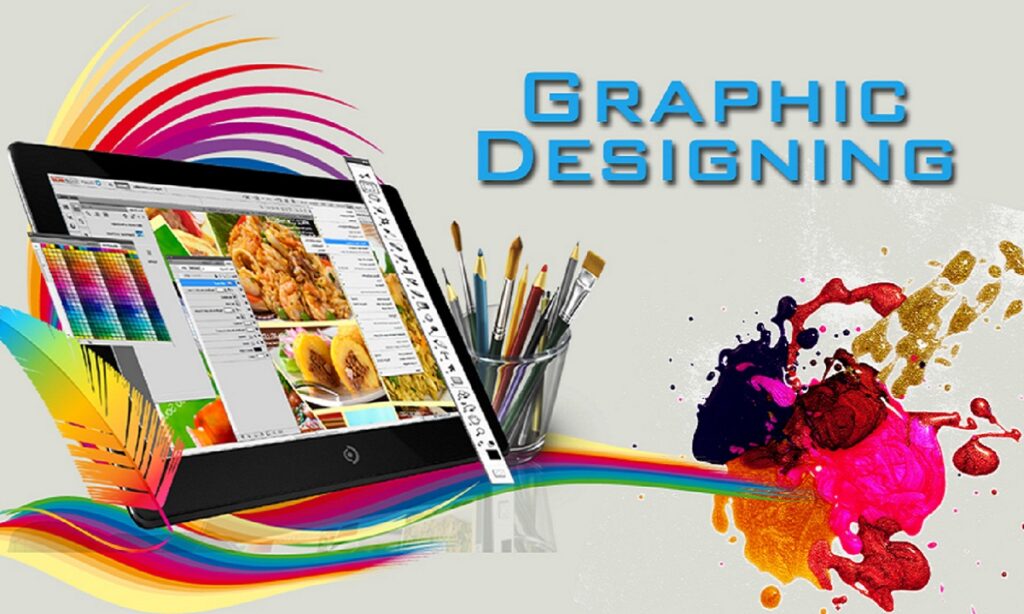Graphic Designing and Creativity: A Perfect Blend
Graphic designing and creativity is not just about creating visually appealing content; it is an art form that combines creativity, technical skills, and storytelling. In today’s digital-first world, graphic designing has become a critical tool for businesses, artists, and creators to communicate ideas effectively. This article delves into how graphic designing nurtures creativity, the tools and techniques involved, and its impact across industries.

What is Graphic Designing?
At its core, graphic designing is the process of visual communication using elements like typography, colors, images, and layouts. It transforms complex ideas into clear, engaging visuals that captivate audiences.
Key components of graphic design include:
- Typography: The art of arranging text to make it legible and visually appealing.
- Color Theory: Understanding the psychological impact of colors to evoke emotions.
- Composition: Balancing design elements to create harmony and focus.
Discover more about the latest tools, trends, and tips in graphic designing by visiting our Comprehensive Graphic Design Resource Center!
The Role of Creativity in Graphic Designing
Creativity is the backbone of graphic design. It is the ability to think outside the box and produce innovative solutions to visual challenges. Graphic designers channel their creativity to:
- Solve Problems: Whether it’s creating a logo or designing a website, graphic designers use creative thinking to meet client needs.
- Tell Stories: Great designs convey a story or message that resonates with the audience.
- Build Brand Identity: Designers craft visuals that reflect a brand’s personality and values.
Fostering Creativity in Design
- Experimentation: Trying new tools, styles, and techniques can spark fresh ideas.
- Inspiration: Drawing ideas from nature, art, or other designs can fuel creativity.
- Collaboration: Working with other creatives encourages innovative thinking.
Graphic Designing Tools: Unlocking Creative Potential
Modern tools and software play a crucial role in unleashing creativity in graphic design. Here are some popular tools:
1. Adobe Creative Suite
- Photoshop: Ideal for photo editing and creating detailed digital artwork.
- Illustrator: Perfect for vector graphics like logos and illustrations.
- InDesign: Used for layouts in magazines, brochures, and print materials.
2. Canva
A user-friendly tool for beginners, Canva offers drag-and-drop functionality with pre-designed templates for social media, presentations, and more.
3. Figma and Sketch
These are collaborative platforms for UI/UX design, allowing teams to create and prototype interfaces effectively.
4. Procreate
Popular among digital artists, Procreate is an intuitive app for creating detailed illustrations on tablets.
5. 3D Design Tools
Programs like Blender and Cinema 4D enable designers to explore 3D modeling and animation, pushing the boundaries of creativity.he Process of Creating Stunning Designs
The journey of creating a graphic design masterpiece involves several stages:
1. Understanding the Brief
The first step is to understand the client’s needs, target audience, and goals.
2. Research and Inspiration
Study competitors, industry trends, and visual styles to gather ideas.
3. Concept Development
Brainstorm ideas and create rough sketches or wireframes to visualize concepts.
4. Execution
Use tools and software to bring the concept to life, ensuring attention to detail.
5. Feedback and Refinement
Present the design, gather feedback, and refine until it aligns with the client’s vision.
Graphic Designing and creativity in Different Industries
Graphic design impacts a wide range of industries, each with unique demands and creative opportunities.

1. Marketing and Advertising
- Designers create eye-catching visuals for campaigns, including banners, social media posts, and video ads.
- Creative storytelling is key to engaging audiences and driving brand awareness.
2. Web and App Design
- Aesthetic and user-friendly designs enhance the user experience (UX).
- UI/UX designers focus on navigation, functionality, and visual appeal.
3. Entertainment
- From movie posters to video game graphics, designers craft visuals that captivate audiences.
- Motion graphics and animations add dynamic elements to storytelling.
4. Print Media
- Graphic designers work on magazine layouts, book covers, and packaging, blending creativity with practicality.
The Future of Graphic Designing
Graphic designing is evolving alongside technology. Some emerging trends include:
1. Artificial Intelligence (AI)
AI-powered tools like Adobe Sensei and Canva’s Magic Design assist designers by automating repetitive tasks and suggesting creative ideas.

2. Augmented Reality (AR) and Virtual Reality (VR)
AR and VR are transforming how designers create immersive experiences for industries like gaming, retail, and education.
3. Sustainable Design
Eco-conscious design focuses on reducing waste by optimizing layouts and using digital-first approaches.
4. Minimalism
Less is more. Clean, simple designs are gaining popularity as they communicate messages effectively.
Tips to Boost Creativity in Graphic Design
- Stay Updated: Follow design blogs, attend webinars, and learn about new tools.
- Practice Regularly: Consistent practice improves skills and sparks creativity.
- Seek Feedback: Constructive criticism helps refine your designs.
- Experiment with Styles: Don’t shy away from exploring new aesthetics or trends.
Conclusion
Graphic designing is a dynamic field that blends art, technology, and creativity to create impactful visuals. Whether you are a beginner exploring design or a seasoned professional, understanding the principles and trends of graphic designing is key to unlocking your creative potential. As technology evolves, the possibilities in graphic designing continue to expand, making it an exciting career and creative outlet.
Embrace the journey of graphic design—it’s not just about creating visuals; it’s about turning imagination into reality.
